by Matt Corrion
Two weeks ago I took a road trip to Phoenix to visit some old friends. We had an amazing time! The desert landscape is so interesting. Since I was visiting in late March, I was not subjected to the 100 degree + temperatures that come in summer, it was a comfortable 80 degrees most of the time.
My friends Brian and Colleen were nice enough to allow me to stay with their family. I brought my camera everywhere, with an eye on photographing and studying the landscape to see what ideas could be incorporated into our landscape designs back home in Colorado. Below I list some of the highlights of places I visited and observed.
Residential Landscapes
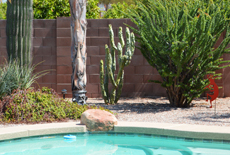
Brian and Colleen’s back yard with “totem pole” cactus – Beautiful!
Saw some interesting things- good and bad… Most homes have no lawn in the front yard, and large back yards typically have a limited amount of lawn. I think this is a good approach that saves water.
So what was used in place of lawn? It seems that at least 50% of the homes have swimming pools, and I saw some very well designed large outdoor patios and outdoor living spaces. For the landscaped areas, the ground cover of choice is small rock mulch (about 3/8″, angular rock).
Within the landscaped areas, I thought some of the plantings were a little thin. Creeping groundcovers, ornamental grasses, and massings of plants could be used more effectively to help cover the rock areas. Other features used in place of lawns were sport courts, outdoor kitchens, and shade structures.
Visiting the Desert Botanical Garden in Phoenix

Purple Prickly Pear at the Desert Botanical Garden
This is truly an amazing garden! So many interesting cacti, agave, succulents, and native desert landscaping. They also were featuring some incredible glass sculptures by Dale Chihuly. I highly recommend visiting this garden if you are ever in the area! They have a great Facebook page as well, check it out.
Highway and Roadside Landscaping
One of the more striking features as you drive through Phoenix (and it is a very automobile dependent city) are the large swaths of roadside landscaping along the highways. Most of these areas are highly maintained slopes of rock with a few plants here and there.
My friends told me that there is a constant battle trying to eradicate the weeds from the rock- seems like a silly design solution to me. The nicer areas, in my opinion , had more plants grouped together in random, natural plantings. Other areas had formal planting in patterns and rows, or even just different color rock placed in patterns…

Aerials of Phoenix highway landscaping. Left- one of the nicer designs I saw, with random natural plantings. Right- this section had no plantings, with patterns of colored rock- not a fan of this approach.
Touring Local Nurseries
I had a chance to tour a local suburban Phoenix Nursery. I was interested to see what plants and materials were commercially available. I was happy you see that the trend of edible landscaping was equally as popular in Phoenix as it is in Denver, with a large selection of herbs, fruit trees, and other culinary delights.
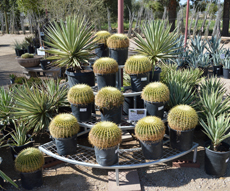
Agave, yucca, and cacti at a local suburban nursery
This nursery also had an impressive collection of sculpture and pottery- These items can add interest to a residential or commercial landscape, require little maintenance, and can serve as interesting focal points to the eye that break up large areas of rock.
One of the more interesting items for sale were packages of two Praying Mantis eggs- for natural pest control.
Hiking in the Superstition Wilderness
On my last day in the Phoenix area, my friend Brian and I went hiking in the Superstition Wilderness area. This turned out to be a very challenging hike to the top of the “flatiron” with amazing views and even more amazing native plants! I couldn’t help but think, – Why couldn’t some of those roadside highway areas be allowed to naturalize like some of this wild landscape, which received no maintenance and no irrigation?
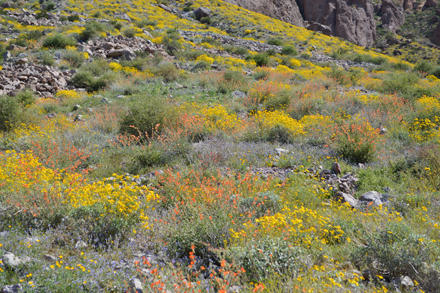
Native wildflowers- the orange flowers are Desert Mallow (Sphaeralcea ambigua), which grows great in my Denver garden!
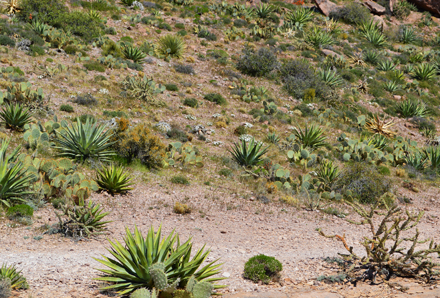
Native landscaping in the Superstition Wilderness area- Why can’t the highway roadside areas be naturalized like this?
This is the official blog of Outdoor Design Group, Colorado Landscape Architects. For more information about our business and our services, click here.
Related Posts:
by Matt Corrion
Some interesting trends have emerged this year in landscape design. In this article I describe the 5 hottest trends we are seeing – Which of these ideas will you incorporate into your landscape?
Outdoor Stone Fireplaces
Outdoor fireplaces have been around for a long time, but in the last few years they have really gained in popularity. They can serve as a focal point in the design of a backyard landscape, while providing the functional warmth of a fire adjacent to an outdoor patio.
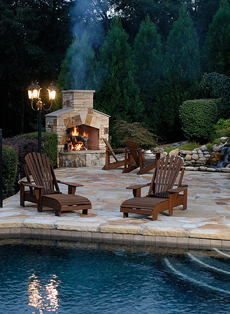 Here in Colorado, where the summers are dry and there are few mosquitoes or other insects, cool summer and fall evenings are perfect for gathering outdoors with family and friends. Outdoor stone fireplaces can add to the ambiance of your outdoor space.
Here in Colorado, where the summers are dry and there are few mosquitoes or other insects, cool summer and fall evenings are perfect for gathering outdoors with family and friends. Outdoor stone fireplaces can add to the ambiance of your outdoor space.
Design Considerations: Outdoor outdoor fireplaces are typically gas burning, unless the property is in a rural area with low fire danger where wood burning is allowed. They can either be custom built using a combination stone, masonry, brick, stucco, or stone veneer; or they can purchased as a prefabricated insert that is put in place and then faced with stone or another decorative material. A combination of decorative stone or concrete caps, mantels, and hearths can also be incorporated, resulting in an almost endless variety of design opportunities.
Due to the increased popularity of outdoor fireplaces and firepits, many municipalities are updating codes and ordinances to provide more specific restrictions and design guidelines. The required distance between the fireplace and any structure may vary between 15 to 25 feet. Always make sure your landscape architect or contractor has checked with your local building department on the current rules and regulations.
Pondless Water Features
Water is one of the building blocks of life. Water features can add a calming effect to your landscape through the sounds and movement of water. They can also mask unwanted noise and bring a peaceful calm to the hustle and bustle of urban living.
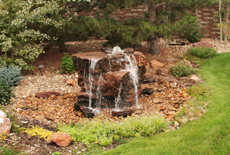 The problem with most water features is that they are high maintenance. While a natural looking pond can be beautiful, they are difficult to construct and can require quite a bit of maintenance. If that maintenance is neglected, or the pond is not constructed correctly one is left with pond that leaks, one does not look natural, or lacks the proper balance of plants, fish, and filters to keep the water clean.
The problem with most water features is that they are high maintenance. While a natural looking pond can be beautiful, they are difficult to construct and can require quite a bit of maintenance. If that maintenance is neglected, or the pond is not constructed correctly one is left with pond that leaks, one does not look natural, or lacks the proper balance of plants, fish, and filters to keep the water clean.
“Pondless” water features solve most of these issues, and are the hottest trend in water feature design. In a pondless water feature, and underground basin in purchased and installed below the ground to hold the water that is circulated through the feature.
A grate is often placed over the basin, and covered with rocks to allow the water to run through to the basin below. The water is pumped from the basin over a decorative rock or sculptural feature. The sound of water is achieved not only from the above ground feature, but by the water splashing through the rocks and into the basin below. And because the basin below ground is shaded from the sunlight, algae will not grow in the water.
Design Considerations: Depending on the size of the feature and how often you intend to run it, you may opt to install a filter and an auto-fill valve connected to a water supply to keep the feature full. You may also opt for an on/off switch for the feature at the home so you can easily turn it on or off. Don’t forget to plan for lighting the feature at night. And finally, when selecting a pump always error on the side of a larger pump, because the flow of water can always be dialed back but can never be increased.
Natural Lawns
As water prices continue to rise, homeowners and businesses are looking for alternatives to the traditional bluegrass lawn. As I have written about in the past, there are many advantages to making your landscaping more efficient, and reducing the amount of bluegrass lawn is the best way to do that.
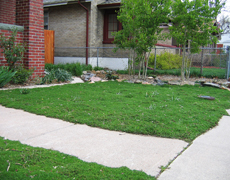 There are many types of plantings that can be used to replace a traditional lawn, but in each case the general principles are the same: plants with reduced watering requirements that require less maintenance. This can we achieved with alternative turfgrasses, Xeriscape plantings, edible garden plants, monocultures of spreading shrubs or perennials, native plants, non-natives, natural meadows, or a combination of these elements.
There are many types of plantings that can be used to replace a traditional lawn, but in each case the general principles are the same: plants with reduced watering requirements that require less maintenance. This can we achieved with alternative turfgrasses, Xeriscape plantings, edible garden plants, monocultures of spreading shrubs or perennials, native plants, non-natives, natural meadows, or a combination of these elements.
Another driver in the popularity of the “natural lawn” concept is the desire of individuals and organizations to move away from using pesticides, herbicides, and fertilizers in large quantities- for the benefit of the environment and human health. Children often play on lawns and in our parks. So in addition to replacing traditional lawns, some people are turning to more organic and natural methods of lawn care.
Design Considerations: It is important to realize that less maintenance does not necessarily mean easier maintenance (at least initially). What I mean by that is a more complex planting such as a Xeriscape with many types of plants, or a natural meadow, will take more analysis and careful monitoring than a simple lawn. However, this monitoring and analysis will be more than made up for by the savings in time and resources by avoiding all of that mowing, edging, aerating, fertilizing, etc. that a traditional lawn would require.
Covered Outdoor Patios
Covered outdoor patios work great for blending indoor and outdoor living space. Over the last decade outdoor patios and gardens have been increasingly utilized as an extension of indoor space.
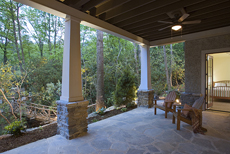 The latest trend is to build a waterproof roof structure over the top of an outdoor patio space. The roof structure is multi-functional, providing shade from the hot afternoon sun as well as protection from the rain and snow. Overhead roof structures also create a more intimate feeling space, creating an outdoor room at a much lower cost than adding a fully enclosed indoor room to a dwelling.
The latest trend is to build a waterproof roof structure over the top of an outdoor patio space. The roof structure is multi-functional, providing shade from the hot afternoon sun as well as protection from the rain and snow. Overhead roof structures also create a more intimate feeling space, creating an outdoor room at a much lower cost than adding a fully enclosed indoor room to a dwelling.
Another benefit to a covered outdoor patio is that outdoor amenities can be protected by the weather. Flat screen televisions, ceiling fans, outdoor kitchens, bar areas, speakers, and lighting can all be incorporated into this outdoor space.
Design Considerations: There are numerous design decisions that need to be made when designing a covered outdoor patio. Will the cover be attached to the home, or free-standing? Support columns for the roof structure can be designed with stone bases. The “ceiling” of the enclosure is also an important design element that should be carefully considered as it will probably be the main surface that you will see when using the space.
Urban Gardening
As the farming industry continues to get more commercialized and corporate, there has been a pushback in the form an increased demand for local farmers markets. And there is no place more local than one’s own yard.
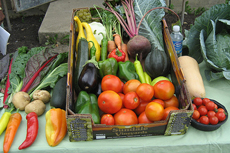 As individuals strive to have more control and knowledge of where their food comes from and how it is grown, many are turning to growing their own produce. Growing a garden is nothing new- however today’s gardens are getting larger and taking up a bigger percentage of the yard. In some cases, urban gardening is being used for an entire backyard or a good portion of a front yard.
As individuals strive to have more control and knowledge of where their food comes from and how it is grown, many are turning to growing their own produce. Growing a garden is nothing new- however today’s gardens are getting larger and taking up a bigger percentage of the yard. In some cases, urban gardening is being used for an entire backyard or a good portion of a front yard.
The urban gardening trend jives perfectly with the “natural lawn” trend. While some people are replacing their traditional lawn with decorative Xeriscapes, others are replacing their lawns with edible gardens. But even edible gardens can be beautiful- there are many decorative herbs that get showy flowers, and some produce such as bright red and yellow peppers can add visual interest to the landscape.
Design Considerations: If you are considering expanding or adding edible garden space there are a few aspects to be mindful of. If you have a homeowner’s association, remember to check their rules on gardens. Consider using decorative paths between your beds, and attractive raised planters can be utilized to keep the space looking a little more organized. Finally, be mindful of pests and rodents that may be attracted to the garden.
This is the official blog of Outdoor Design Group, Colorado Landscape Architects. For more information about our business and our services, click here.
Related Posts:
by Matt Corrion
The drought of 2002 was very hard on landscaping in Colorado. Plants and lawns were stressed by the hot and dry conditions, and mandatory watering restrictions were put in place across the state. Many of us in the landscaping industry vividly remember these hard times.
Well, the drought is back. Today the USDA predicted a huge drop in corn yields, the latest is a long summer of bad drought news. Below are maps issued by the U.S. Drought Monitor from back in July of 2002 and from July of 2012. As you can see, there are many similarities and much of Colorado is once again in an “extreme drought” situation.
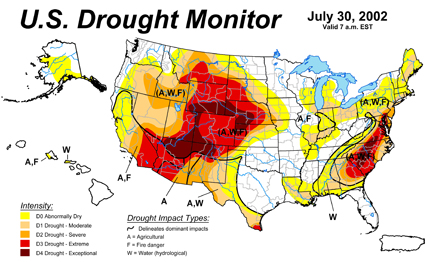
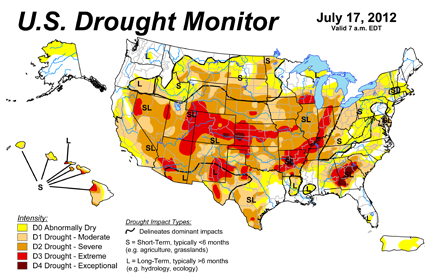
Outlook Does Not Look Good
According to the National Weather Service Climate Prediction Center, the U.S. Seasonal Drought Outlook doe not look promising, although some improvement may occur in southwestern Colorado:
Dryness and drought, exacerbated by above-normal temperatures, have been increasing both in extent and intensity across much of the central and northern U.S. Based upon the July 24 U.S. Drought Monitor, almost 64 percent of the contiguous U.S. was in drought (D1-D4), the highest such value for the U.S. Drought Monitor since its inception in 2000. The last time the lower 48 States had a comparable area of drought (based upon the monthly Palmer Drought Index) was in 1956, according to NCDC.
Across the Southwest, the odds favor an active (wet) southwest monsoon in both the 1- and 3-month precipitation outlooks. As a result, improvement is anticipated across much of Arizona, southern Utah, and southwestern Colorado as the summer monsoon continues.
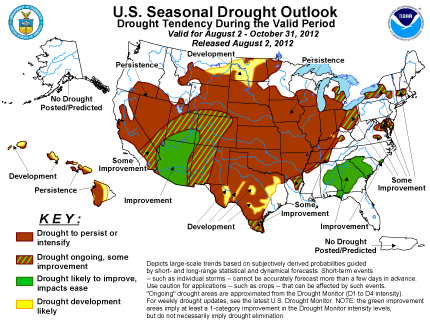
What Does this Mean for Landscaping in Colorado?
As these maps illustrate, the drought conditions that plagued Colorado in 2002 have resurfaced, and most long-term indicators point to continued drought. The good new is that there are some relatively simple changes and considerations for your landscaping to make it resilient to these conditions.
Some of the lessons we have learned and changes that can be made to your landscaping to better withstand drought include:
- Design new landscapes to be more drought tolerant in the first place. Take a more thoughtful professional approach to your landscape design and consider long term maintenance costs as well as installation costs. Consider hiring a landscape architect or design professional.
- Install the latest irrigation technologies to eliminate wasted water: smart weather based controllers, rain sensors, efficient spray nozzles and drip irrigation, to name a few.
- If lawn areas are not used for foot traffic, and are simply for aesthetics, convert these areas to masses of low growing shrubs, groundcovers, or native grass. You can achieve a similar look with plant massings at the groundplane while reducing water needs and maintenance requirements significantly.
- If you have an older irrigation system, consider having a professional do a water audit, and upgrade old nozzles to new, more efficient ones. If you are stuck with a landscape that requires a lot of water (such as large areas of bluegrass with spray irrigation) you should at least fine tune your sprinkler system. This approach is kind of like putting lipstick on a pig (since your landscape will still “require” the same amount of water to be healthy), however there are some new irrigation nozzles such as the Hunter MP Rotator that can be much more efficient at delivering water where it’s needed. At the very least, these upgrades could be a stopgap measure until the landscape can be renovated.
- Remove large areas of high water use bluegrass and lawns, and replace with native or drought tolerant plantings. A renovation of this sort will make the biggest impact by far. You can covert your landscaping from one that requires a lot of water to remain healthy, to one that requires minimal water and still looks beautiful.
So there you have it. The drought is here to stay. Colorado is a semi-arid climate that will remain dry. While tweaks and minor changes to irrigation systems can provide temporary relief, landscaping that requires a lot of water to stay healthy will always struggle in Colorado and the best approach is to install drought tolerant landscaping from the start, or renovate your landscaping to plantings that require less water.
This is the official blog of Outdoor Design Group, Colorado Landscape Architects. For more information about our business and our services, click here.
Related Posts:
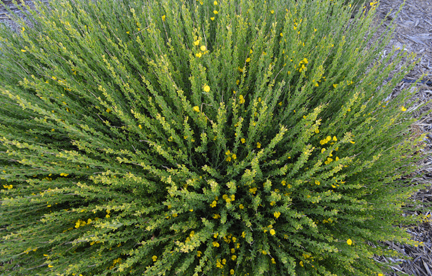






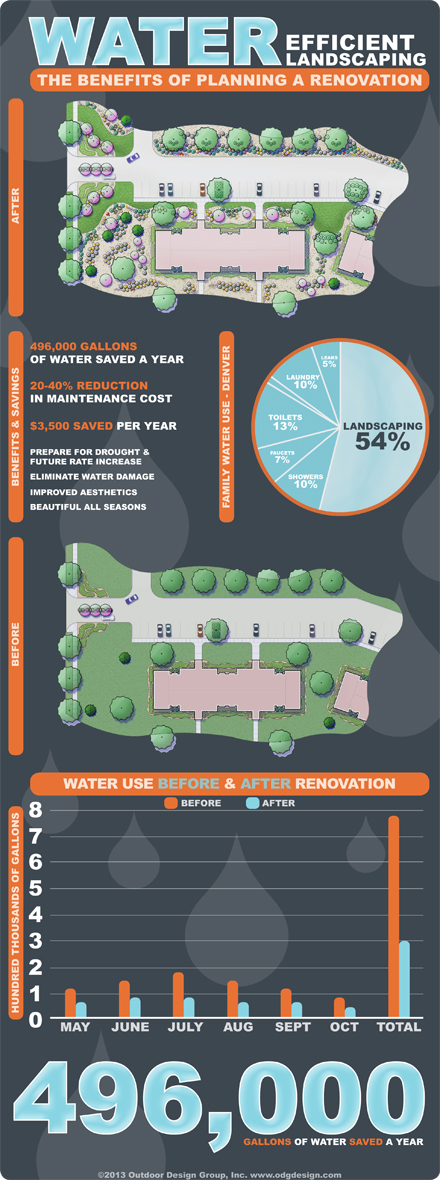

 The problem with most water features is that they are high maintenance. While a natural looking pond can be beautiful, they are difficult to construct and can require quite a bit of maintenance. If that maintenance is neglected, or the pond is not constructed correctly one is left with pond that leaks, one does not look natural, or lacks the proper balance of plants, fish, and filters to keep the water clean.
The problem with most water features is that they are high maintenance. While a natural looking pond can be beautiful, they are difficult to construct and can require quite a bit of maintenance. If that maintenance is neglected, or the pond is not constructed correctly one is left with pond that leaks, one does not look natural, or lacks the proper balance of plants, fish, and filters to keep the water clean.




